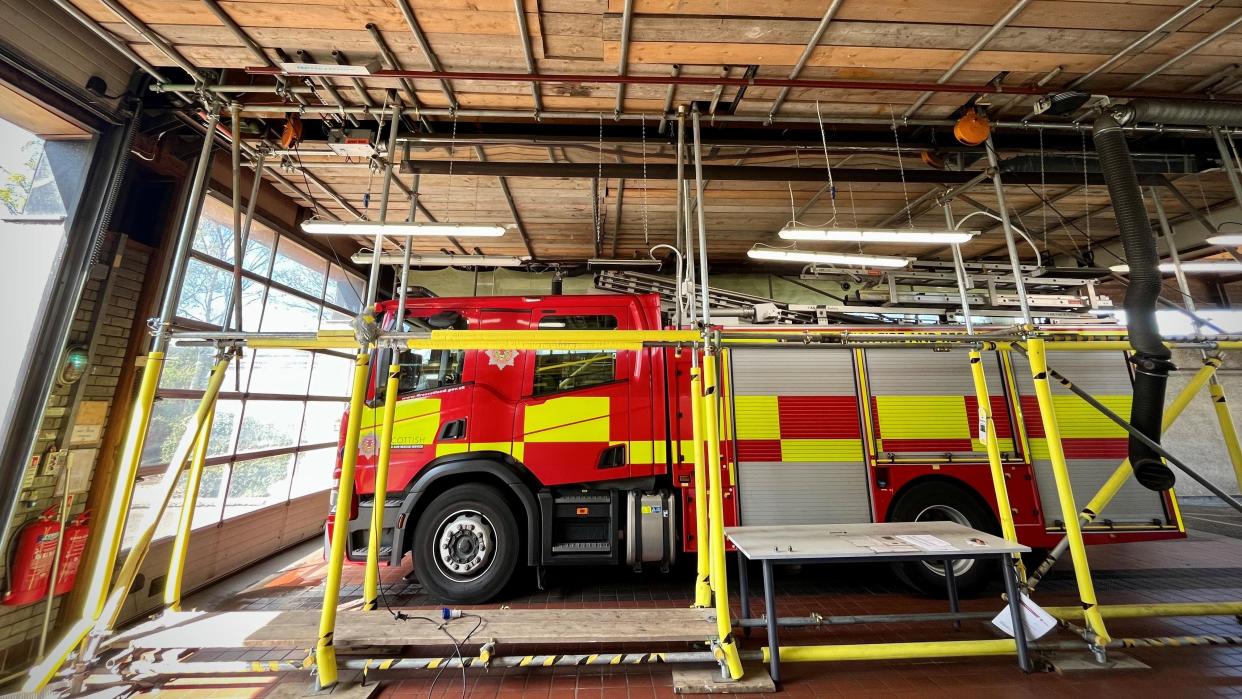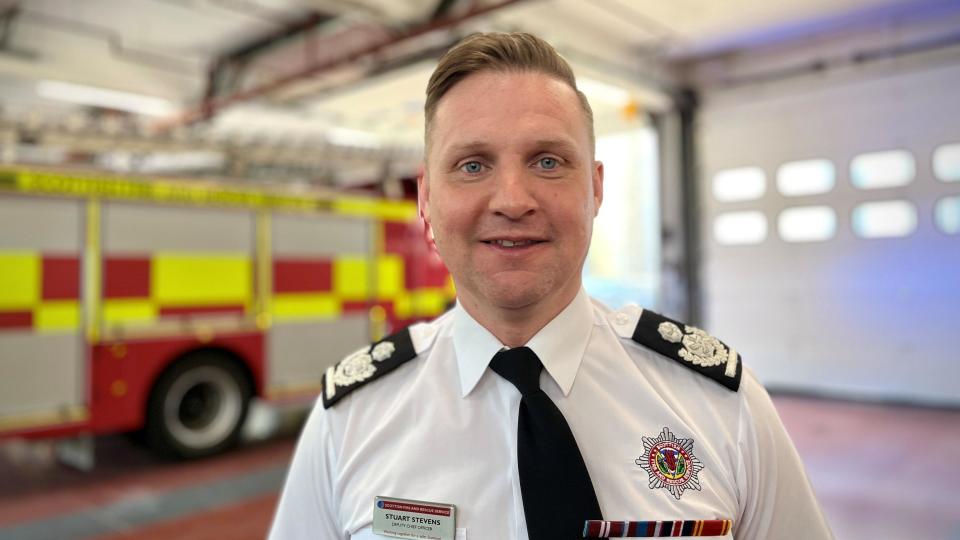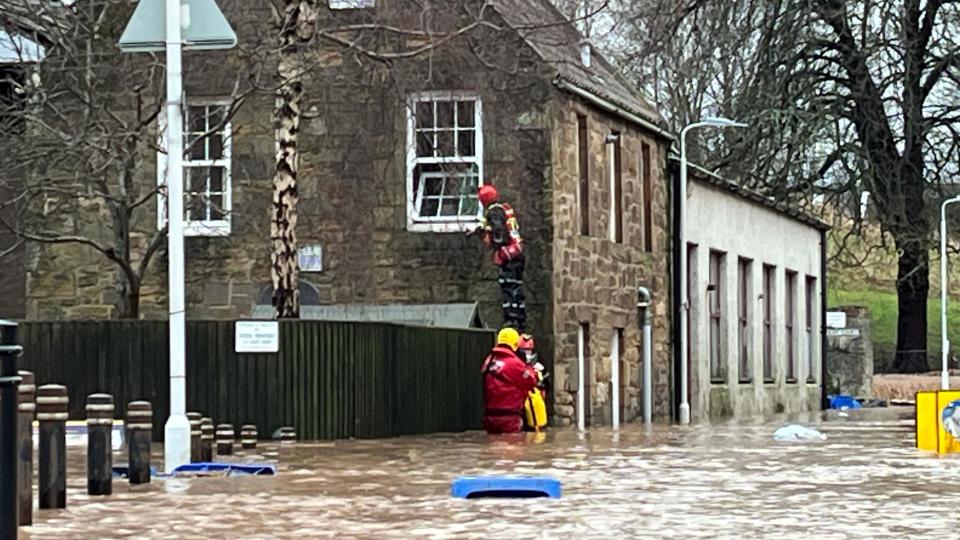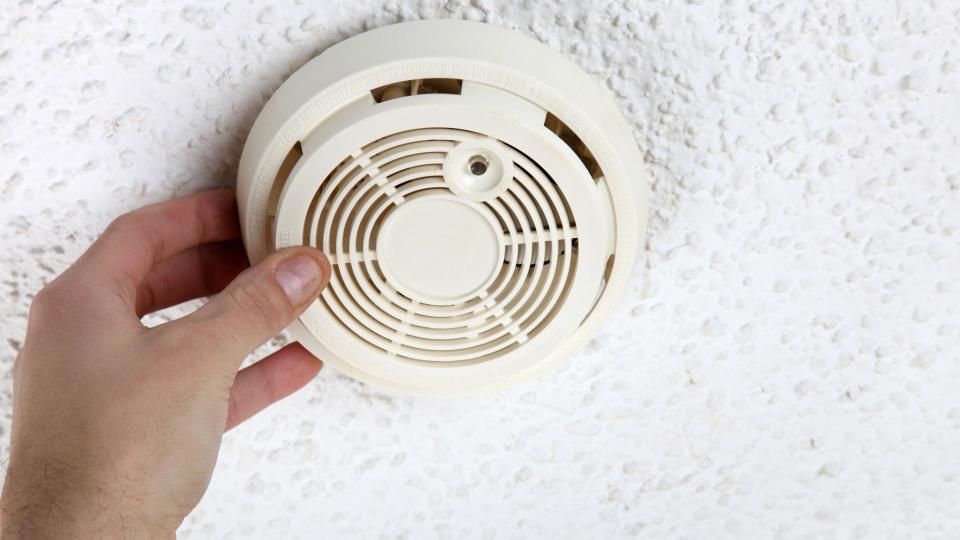Bosses consider the future of 356 fire stations

Fire chiefs say "nothing is off the table" as they consider the future of 356 fire stations around Scotland.
The Scottish Fire and Rescue Service (SFRS) has launched a strategic review, saying the number of fires in homes have reduced but emergencies such as flooding or wildfires - linked to climate change - had increased.
The fire service says some of its stations are in the wrong place, others are no longer fit for purpose and it can't afford to fix them all.
The Fire Brigades Union supports the review but says it can't be used to pursue "a cuts agenda".
Fewer house fires
Scotland's eight regional fire services were merged into the single national organisation in 2013.
A consultation document published on Tuesday will start a process which will shape its future over the coming decades.
Deputy Chief Officer Stuart Stevens told BBC Scotland News: "Risk in Scotland has changed dramatically.
"It is now incumbent on us to make sure our resources are aligned to that risk, having the right people in the right place at the right time."

Over the past 20 years, the number of fires in Scotland has gone down by 56% thanks to prevention work, smoke alarms, legislation on furniture and changing social habits.
The fatality rate caused by fires in Scotland has fallen, from 116 in 1990 to 42 last year.
In contrast, a steady rise in wildfires and flooding incidents over the past 10 years is expected to continue.

The biggest challenge facing the service is the condition and location of its fire stations, some of which were originally placed near heavy industries which are long gone. Almost half are deemed to be in "poor or bad" condition.
Issues with RAAC - the cheaper alternative to standard concrete which has caused concern over safety issues - were identified in 14 fire stations in 2019.
Inside Liberton Fire Station in Edinburgh, scaffolding holds up a wooden "crash deck" which would protect the staff and fire appliances if the RAAC (Reinforced autoclaved aerated concrete) ceiling panels break apart.
The station is one of the busiest in Scotland and may have to be rebuilt on the current site. Replacing the stations with RAAC would cost £77m.
Another issue is the the standard of decontamination facilities for firefighters, with growing evidence showing they are at risk from exposure to contaminants.
For firefighters, the mortality rate from all cancers is 1.6 times higher than general public.
Cleaning equipment with wet wipes
Inverness Fire Station has become the first in Scotland to be refurbished with new decontamination facilities but 25 miles away, in the countryside near Loch Ness, Foyers Fire Station doesn't even have running water.
Instead, its firefighters use wet wipes to clean equipment.
Inevitably, much will come down to what can and can’t be done in the current financial climate.
For seven years in a row, SFRS has received capital funding of £32.5m from the Scottish government, with an extra £10m provided for 2023/24.
The service says it needs £60m a year to bring its buildings and equipment up to standard.
Deputy Chief Officer Stevens says: "We do not have the budget to address this and doing nothing is not an option."

Staffing rural stations is another headache.
Eighty percent of the country is covered by on call/retained firefighters but recruitment is proving increasingly difficult.
Deputy Chief Officer Stevens says more full-time firefighters could be moved into rural areas.
Asked if the review will result in station closures, he said options could include station mergers and more shared facilities with the ambulance service and police.
"Any decisions that we make will be based on full public consultation and based around our risk modelling and evidence," he said.
"We believe we can do more prevention work to make communities more assured of their safety."
The reduction in the number of fires means younger firefighters have less experience of fighting them and the service says it needs further investment in training as a result.
The review also suggests firefighters could move beyond their traditional role, backing up the ambulance service at medical emergencies and, during home safety visits, signposting vulnerable members of the community to services.
Colin Brown from the Fire Brigades Union in Scotland said: "The service is very keen to say there are no fixed plans on the table.
"They're looking for ideas on how the service can be transformed under the constraints of the budget that we have."
He said the FBU had "red line" issues, such as frontline fire appliances maintaining their current crews of five firefighters.
"This can't be allowed to be a cuts agenda," he said. "It's about using existing resources in a smarter way."
Under its current remit, SFRS has to deal with fires, road accidents, transport incidents, flooding, building collapse and chemical, biological and nuclear incidents.
It also carries out inland water rescues, rescues at height, promotes fire safety and enforces fire legislation.
As of March last year, the service had 7,619 staff.
An initial eight-week online survey gets underway today to develop options which will go out for full public consultation later this year.

